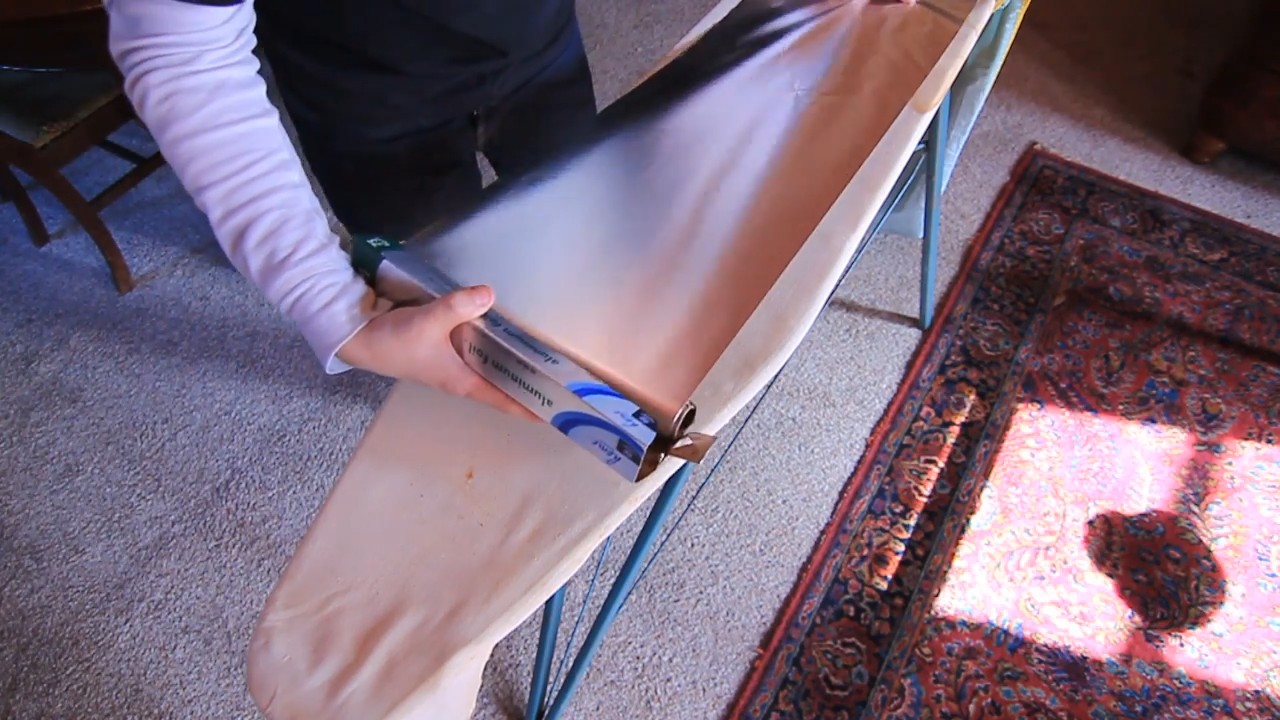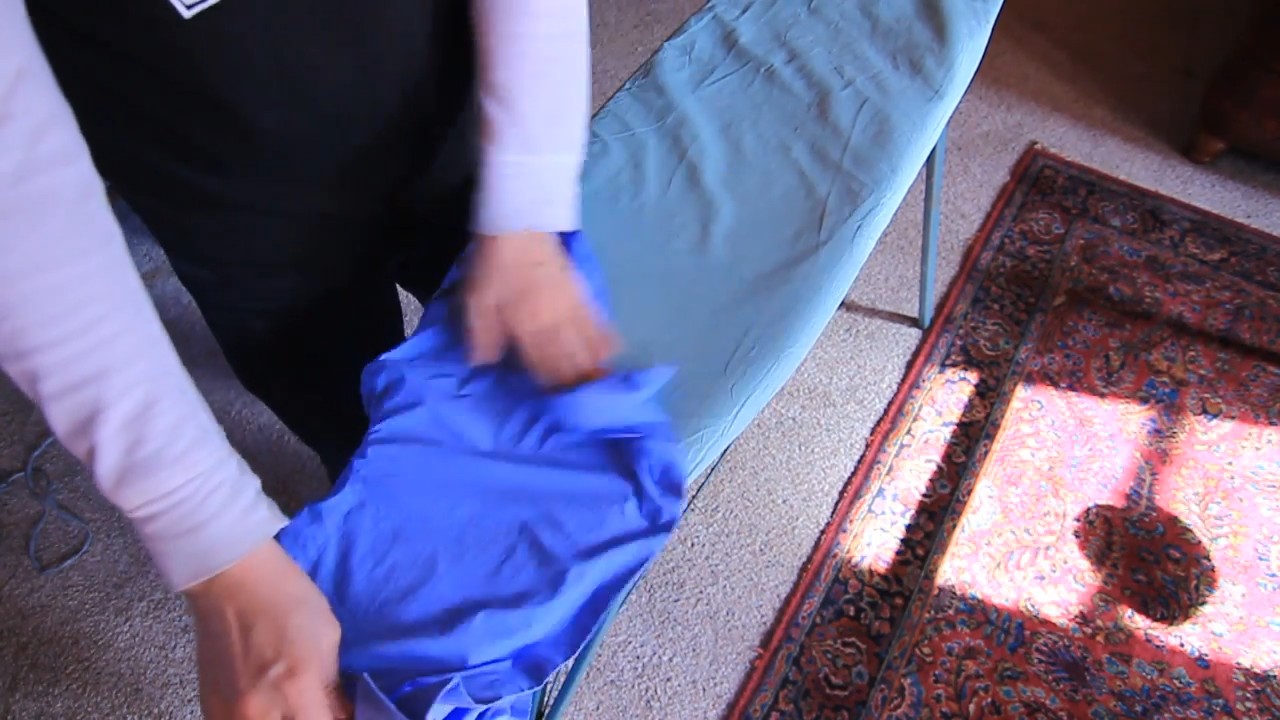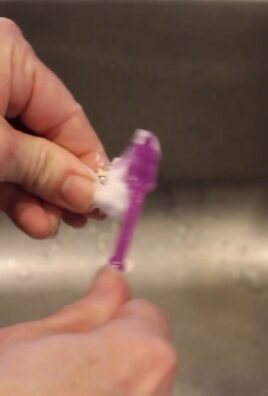Aluminum Foil Hacks: Who knew that the shiny roll sitting in your kitchen drawer held so much potential beyond just wrapping leftovers? I’m constantly amazed by the versatility of everyday items, and aluminum foil is definitely a superstar in that category. For centuries, metals have been used in various ways around the home, but the modern convenience of aluminum foil opens up a whole new world of possibilities, especially when it comes to home gardening!
Have you ever struggled with pests nibbling on your precious plants, or battled weeds relentlessly trying to take over your garden? Well, I’m here to tell you that aluminum foil might just be your new best friend. This isn’t just about keeping your casserole warm; it’s about unlocking some seriously clever and effective DIY solutions for a thriving garden.
In this article, I’m going to share some of my favorite aluminum foil hacks that will not only save you money but also help you create a healthier and more productive garden. From deterring pesky critters to boosting sunlight for your seedlings, these simple tricks are game-changers. So, grab that roll of foil and let’s get gardening!

Aluminum Foil Hacks: Unleash the Unexpected Power of Your Kitchen Roll!
Hey there, DIY enthusiasts! Get ready to be amazed because today, we’re diving deep into the wonderful world of aluminum foil hacks. Forget just wrapping leftovers; this humble kitchen staple is a powerhouse of potential just waiting to be unlocked. I’m going to show you some of my favorite and most practical uses for aluminum foil that go way beyond the fridge. Trust me, you’ll be reaching for that roll more often than you think!
Sharpening Scissors with Aluminum Foil
Dull scissors driving you crazy? Don’t rush out to buy a new pair just yet! Aluminum foil can work wonders. This is one of my go-to tricks when my craft scissors start to feel a little sluggish.
What you’ll need:
* A roll of aluminum foil
* Your dull scissors
Step-by-step instructions:
1. Fold the foil: Tear off a sheet of aluminum foil, about 12 inches long. Fold it over several times to create a thick, multi-layered strip. The thicker the foil, the better the sharpening effect. I usually aim for about 6-8 layers.
2. Cut, cut, cut!: Now, simply start cutting through the folded foil strip with your scissors. Make several cuts, using the full length of the blades each time. I usually do about 10-15 cuts.
3. Test the sharpness: After cutting the foil, test your scissors on a piece of paper or fabric. You should notice a significant improvement in their sharpness. If they’re still not quite sharp enough, repeat the process with a fresh strip of foil.
4. Clean the blades: Sometimes, tiny bits of aluminum can stick to the blades. Wipe them clean with a soft cloth to ensure smooth cutting.
Cleaning Iron Soleplates with Aluminum Foil
Burnt residue on your iron soleplate can make ironing a nightmare. It can stick to your clothes and leave unsightly marks. But fear not! Aluminum foil to the rescue!
What you’ll need:
* A sheet of aluminum foil
* An ironing board or heat-resistant surface
* A clean cloth
* Iron (unplugged and cooled down)
Step-by-step instructions:
1. Prepare the foil: Tear off a sheet of aluminum foil large enough to cover the area of your ironing board. Crumple it up into a ball, then flatten it out again. This creates a slightly abrasive surface.
2. Place the foil: Lay the flattened aluminum foil on your ironing board or heat-resistant surface.
3. Iron the foil: With your iron unplugged and completely cooled down, gently rub the soleplate over the aluminum foil. Use circular motions and apply light pressure. You’ll start to see the burnt residue transferring onto the foil.
4. Clean the soleplate: Once you’ve removed most of the residue, wipe the soleplate with a clean, damp cloth to remove any remaining aluminum particles.
5. Repeat if necessary: If there’s still stubborn residue, repeat the process with a fresh sheet of aluminum foil.
Boosting Wi-Fi Signal with Aluminum Foil
Okay, this one might sound a little crazy, but it can actually work! If you’re struggling with a weak Wi-Fi signal, aluminum foil can act as a reflector, directing the signal towards your devices. I’ve used this trick in a pinch when I needed a stronger signal in a specific area of my house.
What you’ll need:
* A sheet of aluminum foil
* Cardboard or a similar sturdy material
* Tape or glue
* Scissors
Step-by-step instructions:
1. Create a reflector shape: Cut a piece of cardboard into a curved or parabolic shape. This will act as the base for your reflector. You can experiment with different shapes to see what works best for your situation. I’ve found that a semi-circular shape works well.
2. Cover the cardboard with foil: Cover the curved side of the cardboard with aluminum foil, making sure to smooth out any wrinkles. Secure the foil with tape or glue.
3. Position the reflector: Place the reflector behind your Wi-Fi router, with the curved side facing the direction where you want to boost the signal. Experiment with the angle and position to find the optimal placement.
4. Test the signal: Use a Wi-Fi analyzer app on your phone or computer to measure the signal strength in different areas of your house. Adjust the position of the reflector until you achieve the best possible signal.
Important Note: This hack won’t magically create a strong signal where there isn’t one. It simply helps to focus and direct the existing signal. Results may vary depending on your router, the layout of your house, and other factors.
Cleaning Silverware with Aluminum Foil
Tarnished silverware looking dull? Bring back its shine with this simple and effective aluminum foil cleaning method. This is a great alternative to harsh chemical cleaners.
What you’ll need:
* A glass or plastic bowl
* Aluminum foil
* 1 tablespoon of baking soda
* 1 tablespoon of salt
* Hot water
* A soft cloth
Step-by-step instructions:
1. Line the bowl: Line the bowl with aluminum foil, shiny side up. Make sure the foil covers the entire inside surface of the bowl.
2. Add ingredients: Pour in the baking soda and salt.
3. Pour in hot water: Carefully pour in enough hot water to cover the silverware.
4. Submerge the silverware: Place the tarnished silverware in the bowl, making sure each piece is touching the aluminum foil.
5. Let it soak: Let the silverware soak in the solution for 5-10 minutes, or longer if heavily tarnished. You should see the tarnish transferring to the foil.
6. Remove and rinse: Remove the silverware from the bowl and rinse it thoroughly with water.
7. Dry and polish: Dry the silverware with a soft cloth. If there are any stubborn spots, gently polish them with a silver polishing cloth.
How it works: This method uses a chemical reaction called ion exchange. The aluminum foil attracts the sulfur that causes tarnish, effectively removing it from the silverware.
Making a Makeshift Funnel with Aluminum Foil
Need a funnel but don’t have one handy? Aluminum foil to the rescue! This is a super quick and easy solution for pouring liquids or powders into small containers.
What you’ll need:
* A sheet of aluminum foil
Step-by-step instructions:
1. Shape the foil: Tear off a sheet of aluminum foil. Fold it in half diagonally to create a triangle.
2. Form the cone: Roll the triangle into a cone shape, leaving a small opening at the bottom. Adjust the size of the opening to suit your needs.
3. Secure the cone: Pinch the edges of the cone together to secure the shape. You can also use a small piece of tape to hold it in place.
4. Use the funnel: Place the funnel over the opening of the container you want to fill and carefully pour in the liquid or powder.
Protecting Pie Crusts from Burning with Aluminum Foil
We’ve all been there – a beautifully filled pie with a crust that’s browning way too fast. Aluminum foil shields are the perfect solution!
What you’ll need:
* Aluminum foil
* Scissors
Step-by-step instructions:
1. Cut foil strips: Cut several strips of aluminum foil, about 2-3 inches wide. The length will depend on the size of your pie.
2. Fold the strips: Fold each strip in half lengthwise to make them stronger.
3. Shape the shields: Gently shape the foil strips around the edge of the pie crust, covering the areas that are browning too quickly. You can crimp the foil around the edge to secure it in place.
4. Bake as usual: Continue baking the pie as directed in your recipe. The foil shields will protect the crust from burning while the filling finishes cooking.
5. Remove the shields: Remove the foil shields during the last few minutes of baking if you want the crust to brown slightly.
Cleaning Grill Grates with Aluminum Foil
Cleaning a grill can be a real chore, but aluminum foil can make it much easier. This is a simple and effective way to remove burnt-on food and grease.
What you’ll need:
* Aluminum foil
* Grill brush or tongs
Step-by-step instructions:
1. Heat the grill: Turn on your grill and let it heat up to a high temperature.
2. Crumple the foil: Crumple a large sheet of aluminum foil into a ball.
3. Scrub the grates: Using a grill brush or

Conclusion
So, there you have it! These aluminum foil hacks are more than just clever tricks; they’re game-changers in the kitchen and beyond. From sharpening dull scissors to effortlessly cleaning your grill grates, and even boosting your Wi-Fi signal, the versatility of this everyday household item is truly astounding. We’ve explored how aluminum foil can transform your cooking experience, making it easier, faster, and more efficient. Think perfectly baked potatoes with crispy skins, or preventing pie crusts from burning – all thanks to the humble roll of foil.
But the benefits extend far beyond the culinary realm. Consider the time and money you’ll save by using aluminum foil to polish silverware or remove rust from chrome. These are simple, effective solutions that eliminate the need for expensive cleaning products and specialized tools. And let’s not forget the ingenious ways aluminum foil can be used for crafting and DIY projects, adding a touch of shine and creativity to your creations.
Why is this a must-try? Because these aluminum foil hacks are practical, cost-effective, and incredibly easy to implement. They require minimal effort and deliver maximum results, making them a valuable addition to your arsenal of household tips and tricks. Plus, they’re environmentally friendly, often reducing the need for harsh chemicals and disposable cleaning supplies.
Ready to take your aluminum foil game to the next level? Here are a few suggestions and variations to get you started:
* **Experiment with different thicknesses of foil:** Heavy-duty foil is ideal for tasks requiring extra strength and durability, such as grilling or lining baking sheets. Regular foil is perfect for wrapping food, polishing, and other general-purpose uses.
* **Try combining aluminum foil with other household items:** For example, create a DIY funnel by shaping foil and reinforcing it with tape. Or, use foil in conjunction with baking soda and vinegar to tackle stubborn stains.
* **Explore the possibilities of aluminum foil in your garden:** Use it to deter pests, reflect sunlight onto plants, or create makeshift plant labels.
* **Get creative with aluminum foil crafts:** Make decorative ornaments, sculptures, or even jewelry. The possibilities are endless!
We’re confident that once you try these aluminum foil hacks, you’ll be amazed by their effectiveness and versatility. They’re a simple, yet powerful way to simplify your life, save money, and unleash your creativity.
So, go ahead and grab that roll of aluminum foil and start experimenting! We encourage you to try these DIY tricks and share your experiences with us. What are your favorite aluminum foil hacks? What creative ways have you found to use this versatile material? Share your tips, tricks, and photos in the comments below. We can’t wait to hear from you! Let’s unlock the full potential of aluminum foil together!
Frequently Asked Questions (FAQ)
What type of aluminum foil is best for these hacks?
The type of aluminum foil you use depends on the specific hack. For most general purposes, such as wrapping food, polishing silverware, or cleaning, regular aluminum foil is sufficient. However, for tasks that require extra strength and durability, such as grilling, lining baking sheets, or heavy-duty cleaning, heavy-duty aluminum foil is recommended. Heavy-duty foil is thicker and less likely to tear or puncture, making it ideal for high-heat applications and tasks that involve scrubbing or abrasion.
Is it safe to use aluminum foil with acidic foods?
While aluminum foil is generally safe to use with most foods, it’s best to avoid using it with highly acidic foods, such as tomatoes, citrus fruits, and vinegar-based marinades, for extended periods. Acidic foods can cause aluminum to leach into the food, which may affect the taste and potentially pose health risks if consumed in large quantities. If you need to store acidic foods, it’s best to use glass or plastic containers instead. However, using aluminum foil for short-term cooking or wrapping of acidic foods is generally considered safe.
Can I reuse aluminum foil?
Whether or not you can reuse aluminum foil depends on how it was used. If the foil was used to wrap clean, dry food, it can often be reused. However, if the foil was used to cook food, especially greasy or sticky food, it’s best to discard it. Reusing foil that has been contaminated with food residue can lead to bacterial growth and potential foodborne illnesses. Additionally, foil that has been crumpled or torn may not be as effective at protecting food or performing other tasks.
How do I clean aluminum foil after using it for cooking?
Cleaning aluminum foil after cooking can be challenging, especially if it’s covered in grease or burnt food residue. One effective method is to soak the foil in hot, soapy water for a few minutes to loosen the debris. Then, use a non-abrasive sponge or cloth to gently scrub the foil. For stubborn stains, you can try using a paste made from baking soda and water. Apply the paste to the stained areas, let it sit for a few minutes, and then scrub with a sponge or cloth. Rinse the foil thoroughly with water and dry it completely before reusing or storing it.
Are there any safety precautions I should take when using aluminum foil?
Yes, there are a few safety precautions to keep in mind when using aluminum foil. First, avoid using aluminum foil in the microwave, as it can cause sparks and potentially damage the appliance. Second, be careful when handling hot aluminum foil, as it can conduct heat and cause burns. Use oven mitts or tongs to handle hot foil. Third, avoid using aluminum foil to line the bottom of your oven, as it can interfere with heat distribution and potentially damage the oven’s heating elements. Finally, store aluminum foil in a dry place to prevent corrosion.
Can aluminum foil really boost my Wi-Fi signal?
While it might sound like a myth, strategically placed aluminum foil can indeed help to boost your Wi-Fi signal. The foil acts as a reflector, redirecting the signal in a specific direction. This is particularly useful if your router is located in a corner of your house or if you want to focus the signal in a particular area. To try this hack, simply create a curved reflector using aluminum foil and place it behind your router’s antenna, facing the direction where you want to improve the signal. Experiment with different angles and positions to find the optimal configuration. While the results may vary depending on your router and environment, many people have reported noticeable improvements in their Wi-Fi signal strength using this simple trick.
Is aluminum foil recyclable?
Yes, aluminum foil is recyclable, but it needs to be clean and free of food residue. Before recycling aluminum foil, rinse it thoroughly to remove any food particles or grease. Crumple the foil into a ball to make it easier to handle and prevent it from blowing away during transport. Check with your local recycling program to ensure that they accept aluminum foil, as some programs may have specific requirements. Recycling aluminum foil helps to conserve resources and reduce waste, making it an environmentally friendly choice.




Leave a Comment